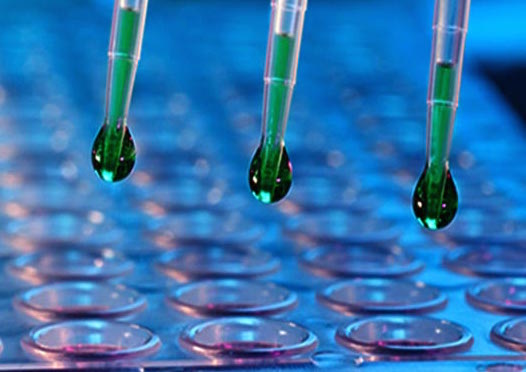Recombinant 2019-nCoV Helicase (N-6His-MBP)
Shipping Info:
For estimated delivery dates, please contact us at [email protected]
| Amount : | 50 µg |
| Content : | Supplied as a 0.2 um filtered solution of PBS, pH 7.4. |
| AA sequence : | Recombinant 2019-nCoV Helicase is produced by our E.coli expression system and the target gene encoding Ala5325-Gln5925 is expressed with a 6His, MBP tag at the N-terminus. |
| Alternative Name : | SARS-CoV 2 Helicase; SARS-CoV 2 nsp13 |
Source : E. coli;
The non-structural protein 13 (nsp13) of SARS—CoV 2 is a helicase that separates double-stranded RNA or DNA with a 5'-3' polarity, using the energy of nucleotide hydrolysis. A basic biochemical characterization of nsp13 demonstrated that it can unwind both doublestranded DNA and RNA in a 5’-3’ direction, and it can hydrolyze all deoxyribonucleotide and ribonucleotide triphosphates. Helicases are motor proteins that utilize the energy derived from nucleotide hydrolysisto unwind double-stranded nucleic acids into two single-stranded nucleic acids. Initially, helicases were only thought to be molecular engines that unwind nucleic acids during replication, recombination, and DNA repair. Recent studies have shown that they are also involved in other biological processes, including displacement of proteins from nucleic acid, movement of Holliday junctions, chromatin remodeling, catalysis of nucleic acid conformational changes, several aspects of RNA metabolism, including transcription, mRNA splicing, mRNA export, translation, RNA stability and mitochondrial gene expression. Some human diseases, including Bloom ’ s syndrome, Werner ’ s syndrome, and Xeroderma Pigmentosum have been associated with defects in helicase function.
The non-structural protein 13 (nsp13) of SARS—CoV 2 is a helicase that separates double-stranded RNA or DNA with a 5'-3' polarity, using the energy of nucleotide hydrolysis. A basic biochemical characterization of nsp13 demonstrated that it can unwind both doublestranded DNA and RNA in a 5’-3’ direction, and it can hydrolyze all deoxyribonucleotide and ribonucleotide triphosphates. Helicases are motor proteins that utilize the energy derived from nucleotide hydrolysisto unwind double-stranded nucleic acids into two single-stranded nucleic acids. Initially, helicases were only thought to be molecular engines that unwind nucleic acids during replication, recombination, and DNA repair. Recent studies have shown that they are also involved in other biological processes, including displacement of proteins from nucleic acid, movement of Holliday junctions, chromatin remodeling, catalysis of nucleic acid conformational changes, several aspects of RNA metabolism, including transcription, mRNA splicing, mRNA export, translation, RNA stability and mitochondrial gene expression. Some human diseases, including Bloom ’ s syndrome, Werner ’ s syndrome, and Xeroderma Pigmentosum have been associated with defects in helicase function.
|
There are currently no product reviews
|
















.png)









